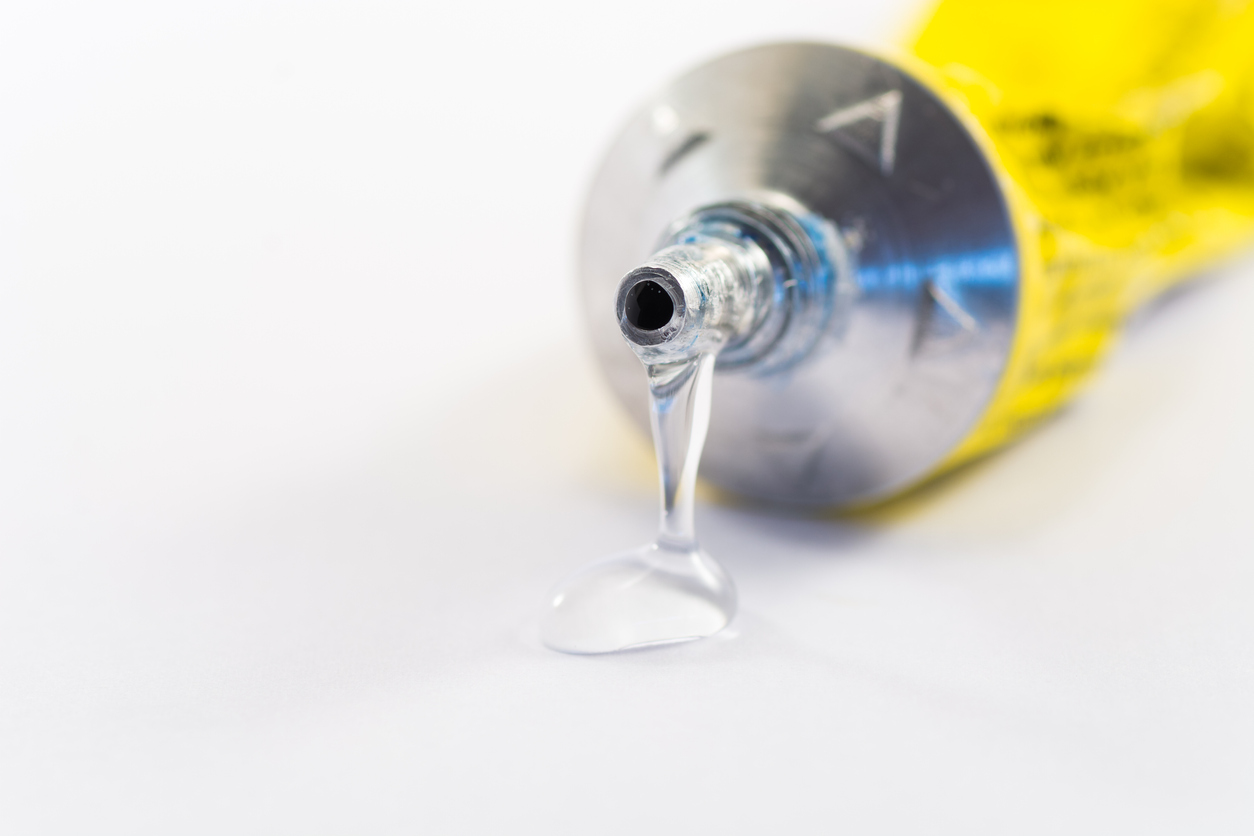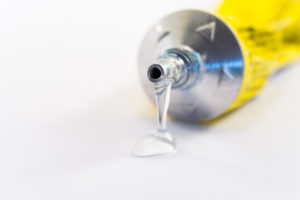Super glue is known around the world for its mighty ability to stick things together. Everything from dirty, greasy car parts to delicate photos and scrapbook materials can be glued together with a little know-how and super glue how-to tips. But with all that sticking power, have you ever wondered if super glue sticks to the inside of the bottle?
For that matter, what about any glue? The answer is all in the science—and it has to do with water.
Polymers Stretch and Stick
White school glue – the most common type of glue, which most students know well from school and crafting—is made of “a variety of chemicals called polymers. These polymers are long strands that are either sticky or stretchy [wonderopolis.]” To make the best glue, the manufacturers must strike the right sticky/stretchy balance with polymers.
The Process of Mechanical Adhesion
The missing ingredient is water. Water acts as the solvent, keeping the glue in a liquid state until just the right time. Through a process called mechanical adhesion, the water in the glue evaporates when exposed to air. So, when you squeeze the glue out of the bottle, it gets exposed to air, and the water evaporates. The glue dries and hardens. This means all that’s left behind are the sticky polymers, which “glue” things together.
Water Keeps things Moving
This is the reason glue doesn’t stick to the inside of the bottle: there is not enough air inside the bottle to evaporate the water. So, the glue stays in it’s liquid state, and it never becomes very sticky. The bottle protects the glue from the air, which keeps it runny.
What About Super Glue?
Have you ever started on a super glue how-to project, only to discover the super glue has dried in its container? If you’ve ever had a tube of super glue for too long, you may have noticed it can dry out faster than white glue. This is because super glue works differently.
Cyanoacrylate, Water Vapor and Chemical Adhesion
Instead of polymers, super glue is made from a chemical called cyanoacrylate. It works in kind of the opposite way that the polymers in white glue do: it “bonds things together when it reacts with water vapor in the air [wonderopolis.]” This process, called chemical adhesion, means that rather than becoming sticky without water, super glue becomes sticky when it is exposed to water.
Super Glue Can Stick to the Inside of the Bottle!
Especially if you are in humid weather (but even if the weather seems dry) the water vapor in the air can seep into a super glue container and dry it out. This makes the super glue stick to the inside of the bottle. So, always make sure to keep your super glue containers closed tight!
White Glue Can, Too
If you’re dealing with white glue, you also want to keep the container tightly sealed—but in this case, it’s to keep the water in!
Super Glue How-To: Homemade Super Glue Recipe
Have you ever wondered if you could make your very own super glue? Would it really work? Test out this fun online recipe for homemade super glue and find out!
“This glue is best used to repair broken crockery, vases, and china. It takes about an hour to dry and cures completely in 24-hours.”
Ingredients:
3 Tablespoons Gum Arabic
1 Tablespoon Glycerin
½ Tablespoon Water
“Mix all of the ingredients together in a bowl. Keep the glue in an airtight container and it will last for about a year.”
Super Glue How-To
Super glue products are recognized around the world as the standard for strength, quality and performance. Super glue makes a variety of exceptional bonding agents for everything from car engines to model airplanes to scrapbooks, and photobooks.

